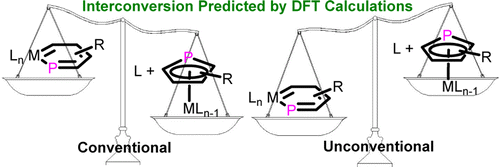Computations Offer an Unconventional Route to Metallaphosphabenzene from a Half-Phosphametallocene

Metallaaromatics have attracted continuing interest of both theoretical and experimental chemists since the first metallabenzene was predicted by Hoffmann and isolated by Roper. In sharp contrast to metallabenzenes, metallaphosphabenzene (MPB) is much less developed and has not been synthesized so far. Thus, developing synthetic approaches is urgent. Here we present thorough density functional theory (DFT) calculations on the thermodynamics and kinetics of the rearrangement between MPBs and the corresponding η5-phosphacyclopentadiene (η5-PCp) complexes. The effects of metal centers, ligands, and substituents on the metallacycles were examined systematically. Our results reveal that the third-row metal osmium has the highest possibility to form MPB in comparison with the first-row metal iron and second-row metal ruthenium. Substituents were found to have a significant effect on the thermodynamics and kinetics of the rearrangement reactions, leading to an interconversion between osmaphosphabenzenes (OsPBs) and the corresponding η5-PCp complexes by simply tuning the substituents on the metallacycles. Thus, all of these findings should invite experimentalists to test these unconventional methods to realize the first MPB.
